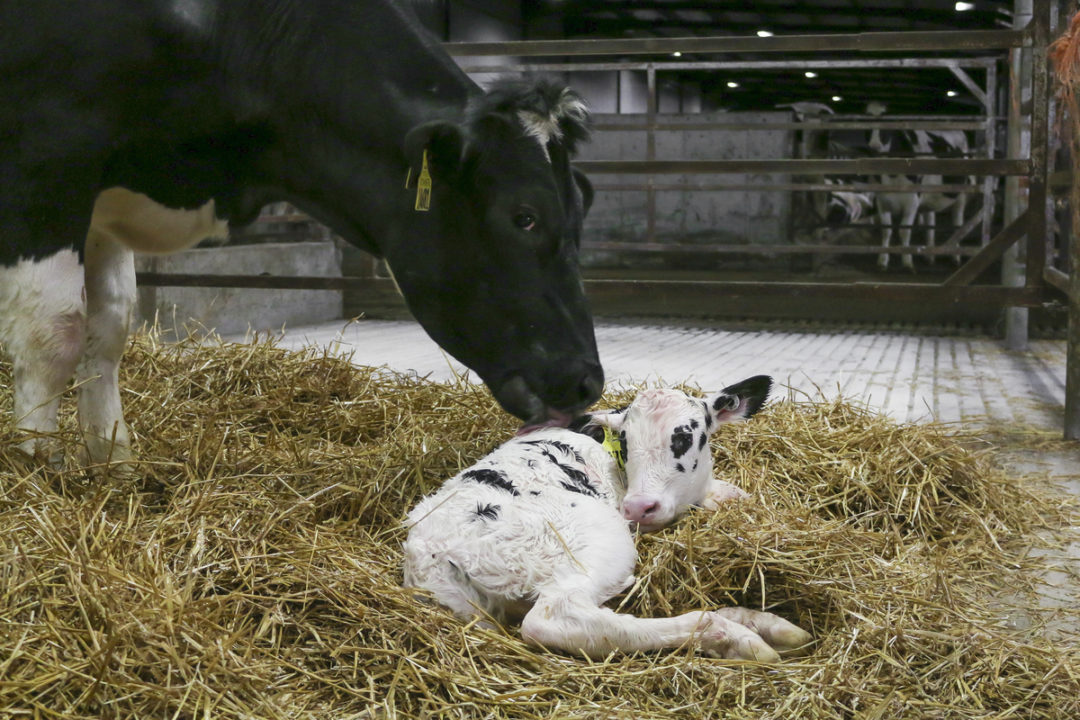In some way or another, dairies have found efficiencies in their reproductive program, whether that be synchronization programs or adding technology to monitor heat detection. However, these advancements are just one piece of the pie that can lead to reproductive efficiency.
The goal to improve first-service conception rates in a dairy herd requires a multifaceted approach. More often than not, producers don’t need to look to the cows for improvements. Rather, they need to evaluate their management skills and transition cow program. Post-calving diseases, such as mastitis, lameness and metritis, can have an adverse impact on reproductive performance, making it take longer for cows to become pregnant and increasing the number of days open.
Doubling down on a superb transition cow management program can allow producers to achieve two main goals for their lactating cows:
- Cows make it through the transition phase as healthy as possible.
- First service has the highest conception rate among all services.
Goal No. 1: Avoid fertility roadblocks and get cows through the transition phase as healthy as possible
When fresh cows are healthy, they will begin cycling prior to the end of their voluntary waiting period and before their first service, making them more fertile than cows that don’t. This makes it imperative to see fresh cows through the period from dry-off to first insemination with the utmost care in order to avoid fertility roadblocks. There are a variety of factors to take into consideration when evaluating a transition cow program. The University of Wisconsin – Madison's School of Veterinary Medicine developed the Transition Cow Risk Assessor, evaluating the following factors:
- Space per cow – How much space cows have to eat and move around can positively or negatively impact their disease risk.
- Locomotion – Hoof health is a welfare issue and is critical for achieving adequate dry matter intake (DMI).
- Body condition – Too high or too low body condition score (BCS) predisposes cows to illness.
- Pen moves and lockup time – The number of pen moves that occur from pre-calving through post-calving can put unnecessary stress on cows.
- Fresh cow monitoring periods – During the first 60 days of lactation, cows that experience fresh cow diseases, such as lameness, metritis and mastitis, run the greatest risk for culling.
These factors may be obvious. Nevertheless, take a moment to really understand how these small but important details work together and can influence fertility outcomes on a dairy.
A great roadblock to fertility is loss of body condition after calving. Plenty of space and available feed is needed at the bunk to avoid body condition loss. If a pen is overcrowded, stronger-willed cows will make it to the bunk and eat all the feed they need. However, more timid and submissive cows fall behind and do not receive the proper nutrition they need. As a result, they fall into a negative energy balance and lose weight. Those cows then have weakened immune systems, making them more susceptible to post-calving diseases, such as mastitis and metritis. Cows that have poor udder health can have lower fertility rates throughout their lactations. A case of metritis can also mean depression in fertility, with an increase of 18 days open. These cows cannot be expected to exude great fertility rates because of the circumstances they were placed in.
For many years, the dairy industry has accepted it as a fact that cows may lose body condition in the first 60 days post-calving. However, this should not be accepted as a normal occurrence because of the negative impact condition loss has on fertility. If a large percentage of cows are losing body condition in this phase, this signals the need to improve the management of transition cow programs and the management of getting cows pregnant earlier in their lactation. Studies show that a high fertility cycle feeds off the pregnancy rates of a cow’s previous lactation. If a cow gets pregnant by 130 days post-calving, it is more likely that she will not lose her body condition and will experience less disease. This paradigm creates a domino effect in which each pregnancy will become that much more efficient.
Goal No. 2: Make fertile cows even more fertile
Now that fresh cows have made it through the transition phase as healthy as possible, farm teams can focus on making the first service the most successful service. A strong 21-day pregnancy rate can be a driver of financial success on a dairy by helping eliminate labor for additional services and reducing milk production losses. In fact, delays in time to pregnancy can cost as much as $3 per day for each day open. Practicing proper A.I. protocols – such as semen handling and prioritizing cow comfort to avoid other fertility road blockers, such as heat stress – are basics to consistently master. Introducing a genomic testing plan can help ensure a dairy herd is made up of animals that have greater resistance to post-calving diseases such as lameness and mastitis, and is also something to consider. In addition to these practices, a 2021 study offers a new tactic for dairies that use synchronization programs.
A study conducted by Zoetis in 2021 found that a higher dose of Factrel Injection (gonadorelin injection) from 2 mL to 4 mL — given at the third GnRH injection of Double-Ovsynch synchronization programs increased first-service conception risk in multiparous cows by 11.7%. The increased dose was able to overcome high progesterone levels and induce ovulation. Based on a predictive reproductive financial model, an estimate of return on investment (ROI) indicates a 2.4-to-1 ratio in favor of adding 2 mL of GnRH in the Double-Ovsynch regimen. With this investment, producers can help improve their herds’ breeding efficiency, keep older lactating cows in the milking string, and reduce costs for second- and third-conception services.
Dairy producers must realize that improving first-service conception rates to 45% to 60% is possible. This goal takes a multifaceted approach that starts in dry and transition phases and leans on superb management practices. Only then can dairy producers focus on making their first service the most successful one.
References omitted but are available upon request by sending an email to the editor.







